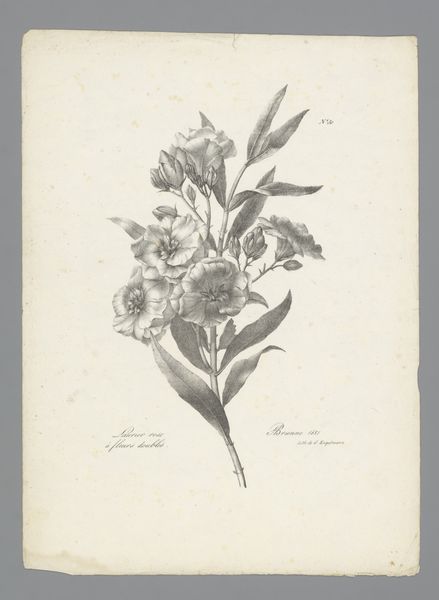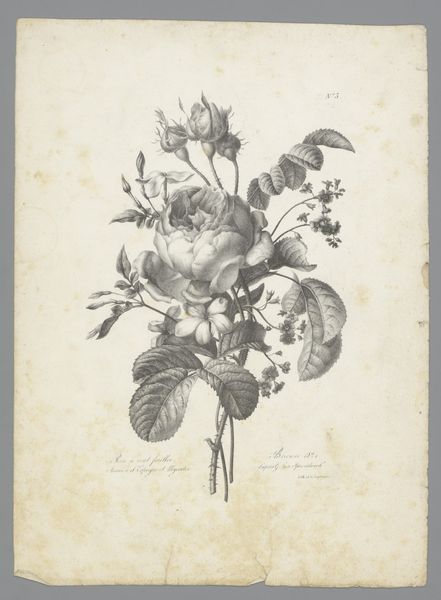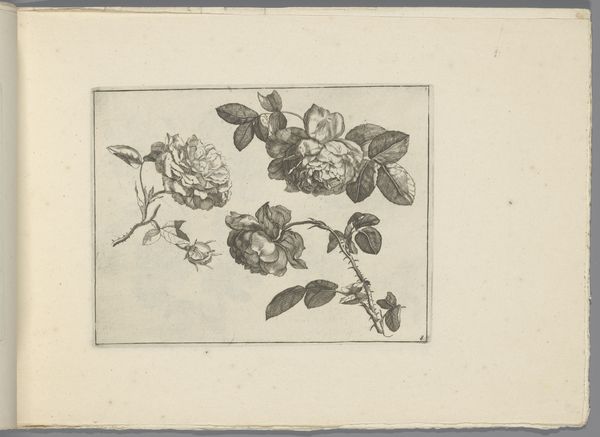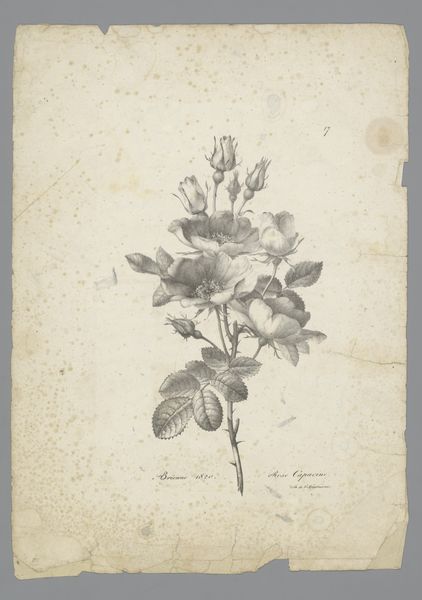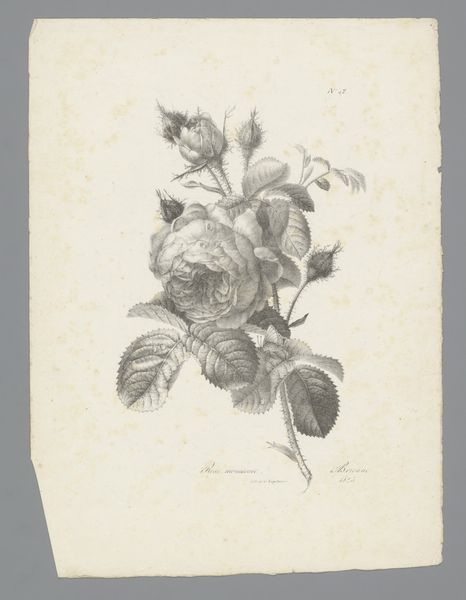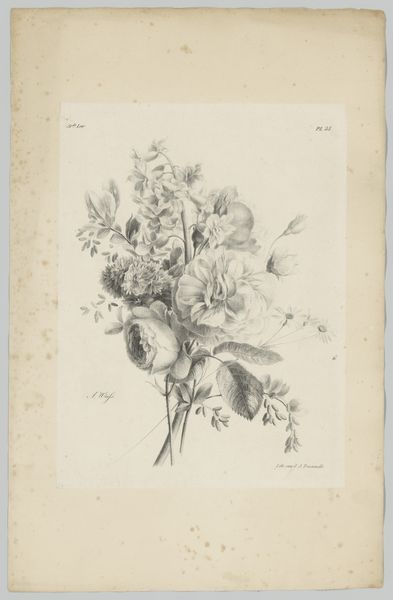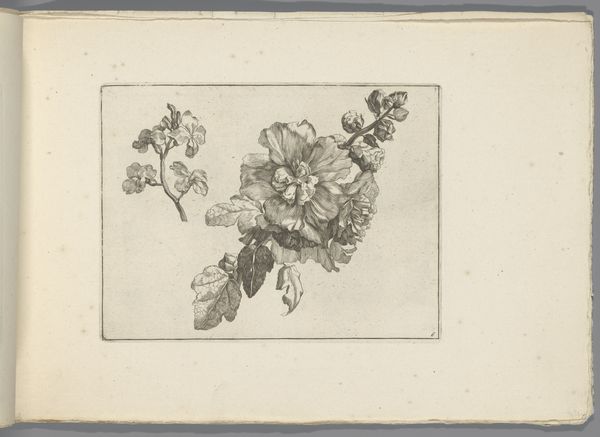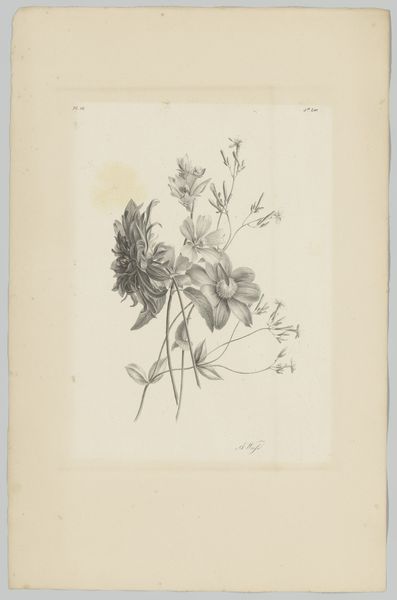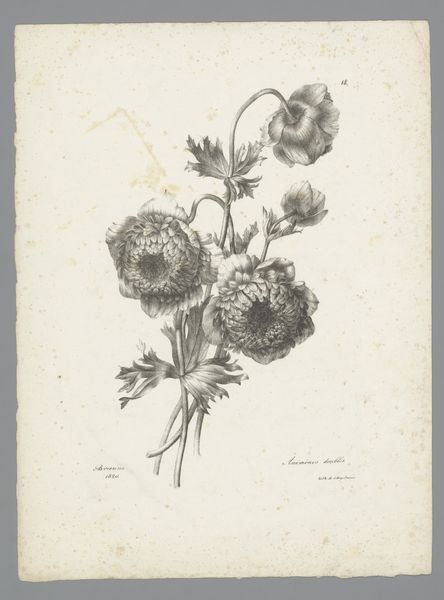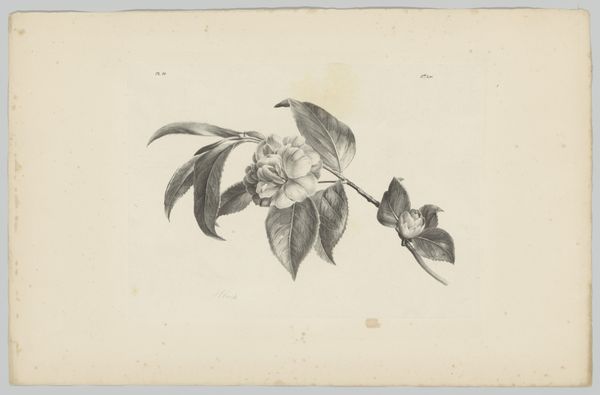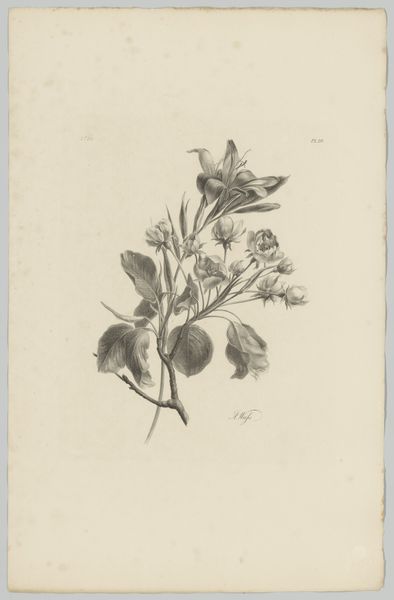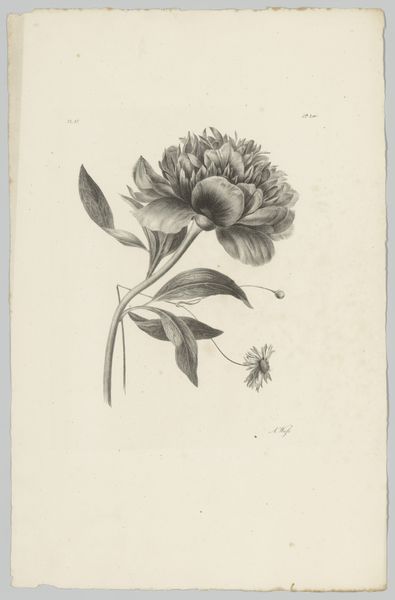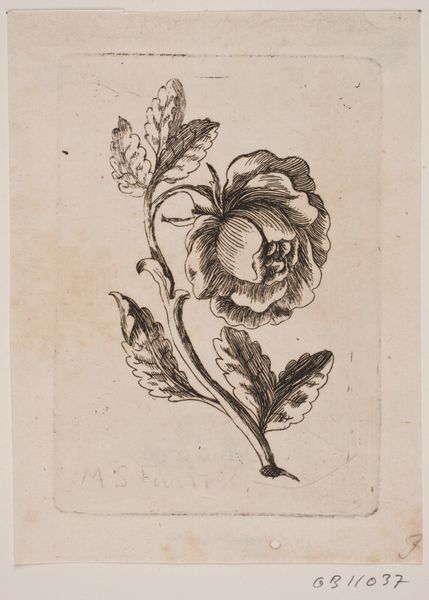
drawing, paper, graphite
#
drawing
#
paper
#
line
#
graphite
#
realism
Dimensions: height 365 mm, width 272 mm
Copyright: Rijks Museum: Open Domain
Curator: Welcome. Before us, we have "Witte Roos", or White Rose, created in 1819 by Auguste Piquet de Brienne. It's currently held here at the Rijksmuseum. It is rendered using graphite on paper in a precise style. Editor: My first thought is how delicately fragile this image feels. The gradations of tone created by the graphite make the rose appear almost translucent. It captures the transient nature of beauty. Curator: Indeed, Brienne's control of line is exquisite. The delicate rendering gives an ephemeral quality, typical of early 19th-century botanical illustration. What interests me is the contrast in the levels of details—the buds compared to the flower itself, for example. The stippling work versus the heavier marks closer to the flower core is well thought-out. Editor: I find myself considering the laborious process behind such precision. Imagine the countless hours spent meticulously rendering each leaf vein and petal edge. I am also quite intrigued by the paper itself; it gives some indication of production methods of the era and is also marked by visible imperfections, some natural sign of age perhaps? Curator: Interesting point. I think one could view the linear quality and muted color as Neoclassical, hearkening back to line-based art from Classical Greece and Rome and this focus on nature can represent harmony and balance. It serves to explore how our perception of the subject matter is controlled by aesthetic rules of balance and visual weight. Editor: True, but it's more than just aesthetic refinement. Botanical studies such as this provided key source material in a period of rapid growth in the textile, porcelain, and ornamental crafts of Europe, with flowers like these acting as guides for pattern design and mass production. It's where nature meets the factory. Curator: It highlights the timeless interaction between artistic rendering and scientific exactness. Brienne's skill reminds us that true art lies not just in reproduction, but in interpreting form and the effect on us. Editor: Absolutely. Looking closer, it is very clear to me the value found in art beyond just pure aesthetics. Today, we appreciate the convergence of technique and material application to mass produce botanical works with various uses for varied markets. It is the perfect overlap between art and real life.
Comments
No comments
Be the first to comment and join the conversation on the ultimate creative platform.
